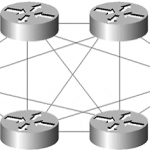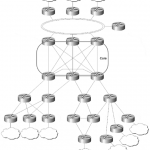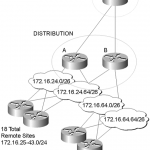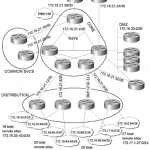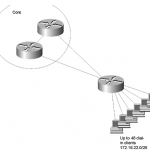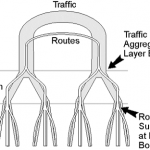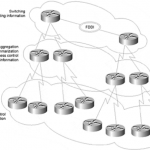CCIE Network Design FAQ: Large Scale Cores Figure: Full Mesh Neighbors Q1. Is NHRP a routing protocol, or is it a protocol that helps routing protocols do their job? Answer: A routing protocol. Q2. How many paths exist through a network with 30 nodes? 40? Answer: 30 nodes has 870 paths; 40 nodes has 1560 paths. Q3. What task does a route server in NHRP … [Read more...]
CCIE Network Design FAQ: BGP Cores and Network Scalability
CCIE Network Design FAQ: BGP Cores and Network Scalability Figure: The Network Core Q1. What is an EGP? Answer: An EGP is an Exterior Gateway Protocol, which is a protocol designed to carry routing information between ASs. BGP is an EGP. Q2. What prevents iBGP from being an effective IGP? Answer: iBGP cannot determine if a path within an AS is a loop because the AS … [Read more...]
CCIE Network Design FAQ: EIGRP Network Design
CCIE Network Design FAQ: EIGRP Network Design Q1. What are the two basic tools you can use to summarize routes (or hide destination details) in EIGRP? Answer: Summarization and distribution lists. Q2. How can you tell that a route is a summary when you look at the routing table? Answer: It's marked as a summary, and the next hop interface is null0. Q3. What is the default … [Read more...]
CCIE Network Design FAQ: IS-IS Network Design
CCIE Network Design FAQ: IS-IS Network Design 1: What protocol was IS-IS originally designed to provide routing information for? Answer: Connectionless Network Service (CLNS). 2: Where can summarization take place in IS-IS? Answer: On any L2 router. 3: How many levels of routing are there in an IS-IS network? Answer: Two. L1 and L2. 4: How many pseudonodes … [Read more...]
CCIE Network Design FAQ: OSPF Network Design
CCIE Network Design FAQ: OSPF Network Design Q1. What parameters must be matched for OSPF routers to become adjacent? Answer: Hello interval, Dead interval, Wait interval, and the link type. Q2. Is it ever normal for two OSPF routers to reach only a two-way state? When? Answer: Yes; when neither one of them are DR or BDR on a multi-access network. Q3. What is a good way to … [Read more...]
CCIE Network Design FAQ: Applying the Principles of Network Design
CCIE Network Design FAQ: Applying the Principles of Network Design Q1. What does hierarchy provide in a well-designed network? Answer: The foundation, or the skeleton on which everything else hangs. Figure: Traffic and Routes in a WellDesigned Network Q2. What is the primary tool used to bound the area affected by network changes? Answer: Summarization. Q3. How can … [Read more...]
CCIE Network Design FAQ: Redundancy
CCIE Network Design FAQ: Redundancy Q1. Why is it important to consider link capacities when designing redundancy? Answer: The backup link should be able to handle the full traffic load normally placed on the primary link. Q2. Why is designing redundancy in the core easier than at other layers? Answer: Suboptimal routing should be easier to deal with because the devices in … [Read more...]
